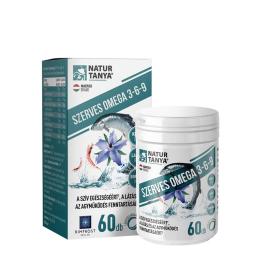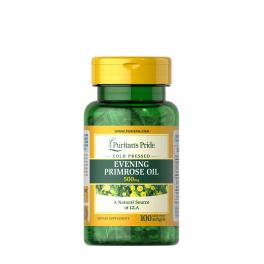Omega fatty acids include Omega-3 (ALA, alpha-linolenic acid), Omega-6 (linoleic acid) and Omega-9 (octadecenoic acid, oleic acid). Omega-3 and Omega-6 are essential, polyunsaturated fatty acids that our bodies cannot produce. In contrast, Omega-9 is a non-essential, monounsaturated fatty acid that can be produced naturally by the body. All three fatty acids have different effects on our body, and it is also important in what proportion and how much of them we consume. The combined Omega 3-6-9 products available in our online store contain all important Omega sources in the right amounts.
What is the difference between Omega 3-6-9 fatty acids?
Under Omega 3-6-9 we mean unsaturated fatty acids that have a specific chemical structure. Their name comes from where the double bond of the carbon atoms is located on the fatty acid chain. If there is a double bond in position three from the omega end, then we are talking about Omega-3, if in position six, then Omega-6, and if in position nine, then we are talking about Omega-9 fatty acid.
Unsaturated fatty acids are distinguished from saturated fatty acids by the presence of a double bond. Due to the double bond, unsaturated fatty acids have a looser structure than saturated fatty acids, which makes them less likely to stick to the vessel wall, so unsaturated fatty acids have cholesterol-lowering and vessel wall-protective properties. Replacing saturated fatty acids with unsaturated fatty acids in the diet contributes to maintaining normal blood cholesterol levels.
Omega-3 fatty acid
Essential Omega-3 fatty acids include polyunsaturated alpha-linolenic acid (ALA), eicosapentaenoic acid (EPA), and docosahexaenoic acid (DHA).
Omega-3 fatty acids play a role in, among other things, lowering blood pressure, maintaining the elasticity of blood vessels, improving vision, and preserving the moisture content of the skin. ALA contributes to the maintenance of normal blood cholesterol levels. (The beneficial effect can be achieved with a daily intake of 2 g of alpha-linolenic acid.)
A lack of Omega-3 can be indicated by sensitive, dry skin or even an unusual increase in acne, depression, nail problems, dry eyes, joint pain, increased hair loss, or split hair.
Omega-3 fatty acid sources
Omega 3 fatty acids can be found naturally in marine fish, crustaceans, shellfish, freshwater fish, legumes (peas, lentils, beans), nuts, flaxseeds, and green leafy vegetables (e.g. broccoli, spinach).
Omega-6 fatty acid
Omega-6 fatty acids include 11 fatty acid groups. However, we must distinguish between the individual fatty acid groups, since while arachidonic acid is responsible for the formation of prostaglandins that result in inflammatory processes, linoleic acid contributes to the maintenance of normal blood cholesterol levels. (The beneficial effect can be achieved with a daily intake of 10 g of linoleic acid.)
Of the Omega-6 fatty acids, linoleic acid and alpha-linolenic acid are the most favourable for the body. Omega-6 in small amounts is essential for proper healing, but excessive consumption is harmful to the body: our cholesterol levels may rise, and our chances of developing atherosclerosis may also increase.
Signs of a lack of omega-6 fatty acids include dry skin and eyes, hair loss, kidney failure, heart rhythm and digestive disorders, frequent infections, and slow wound healing. In addition, learning problems, mood swings, and concentration problems can also be related to the lack of fatty acids.
Omega-6 fatty acid sources
The best Omega-6 sources are vegetable oils, soybeans, tofu, seeds (sunflower seeds, hemp seeds, grape seeds, pumpkin seeds, Aztec sage seeds), and nuts.
Omega-9 fatty acid
Omega-9 is not an essential fatty acid, and it is produced naturally by our body if we have a sufficient amount of Omega-3 and Omega-6 fatty acids. Otherwise, we have to supplement the necessary amount through food.
Fatty acid plays an important role in keeping the heart healthy, as it can contribute to healthy, balanced cholesterol levels and strengthen the immune system.
Omega-9 fatty acid sources
Omega 9 fatty acids can be found naturally in avocados, nuts (pecans, cashews, macadamia nuts), almonds, hazelnuts, pistachios, olives and olive oil.
Why is the right Omega 3-6-9 ratio important?
Each fatty acid has its role and effect. Omega-6 and Omega-3 have different effects, while the former is pro-inflammatory, while the latter is anti-inflammatory.
The Omega-3 / Omega-6 ratio considered correct by researchers would be 1:3 and 1:5, but in reality, it is closer to 1:10 and 1:30, respectively. The reason is to be found in our food. A diet rich in Omega-6 but poor in Omega-3 increases inflammation, so it is important to consume fatty acids in the right proportion.
The symptoms of Omega-3 deficiency can be very serious, such as depression, cardiovascular diseases, and, in the case of pregnancy, improper development of the fetus and later of the baby.
In addition to the right amount, the right proportion of fatty acids is also important. The Combined Omega 3-6-9 supplements ensure this: they already contain the right amounts for our body.
Available packages in the Vitamin360’s online store
Omega 3-6-9 products from many internationally recognized brands are available in our online store, including products from Ostrovit, Puritan's Pride, Now Foods, Universal Nutrition, Nordic Naturals, and Nutravita.

































